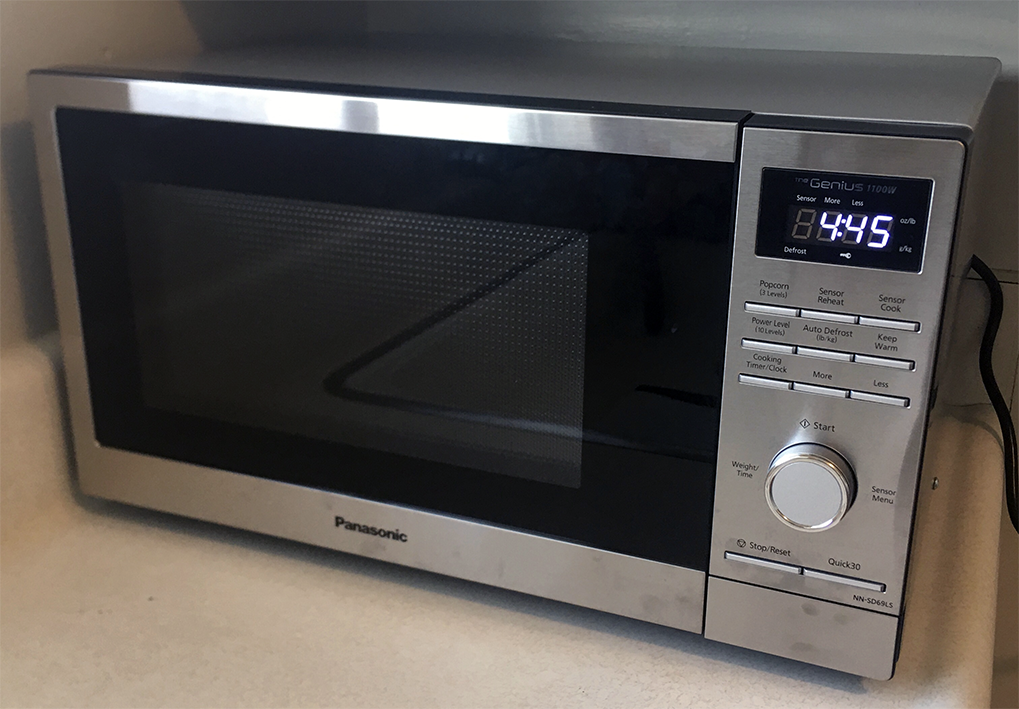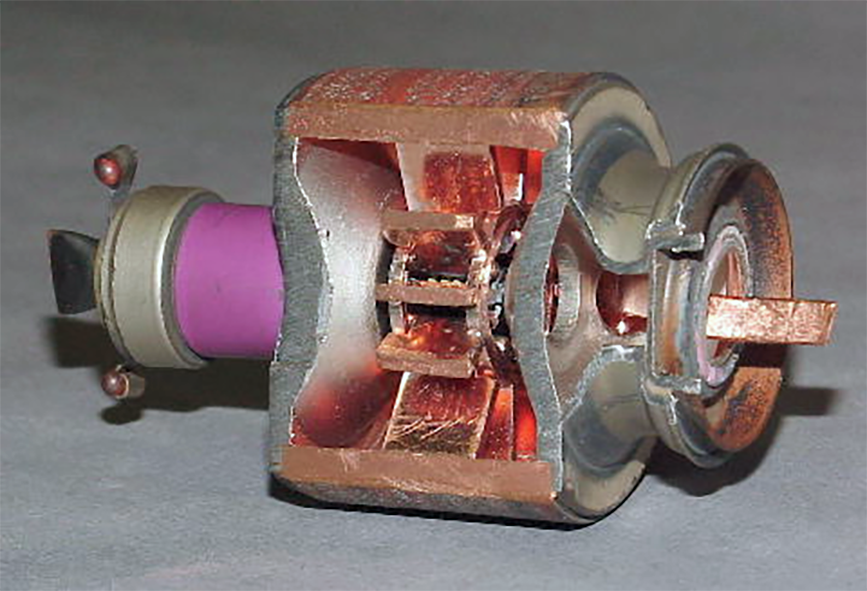FabulousFusionFood's Microwave-based Recipes Home Page
 Modern microwave oven.
Modern microwave oven.
Microwave Recipes
Welcome to FabulousFusionFood's Microwave-based Recipes Page — A microwave oven or simply microwave is an electric oven that heats and cooks food by exposing it to electromagnetic radiation in the microwave frequency range. This induces polar molecules in the food to rotate and produce thermal energy in a process known as dielectric heating. Microwave ovens heat foods quickly and efficiently because excitation is fairly uniform in the outer 25–38mm of a homogeneous, high-water-content food item.
The cavity magnetron developed by John Randall and Harry Boot in 1940 at the University of Birmingham, England made microwaves possible, as their invention as they generated a small and portable higher-powered microwave generator that worked at shorter wavelengths was needed. The heart of the modern microwave is still the magnetron.
Sir Henry Tizard traveled to the US in late September 1940 to offer Britain's most valuable technical secrets including the cavity magnetron in exchange for US financial and industrial support. An early 6 kW version, built in England by the General Electric Company Research Laboratories, Wembley, London, was given to the U.S. government in September 1940. In 1945, the heating effect of a high-power microwave beam was accidentally discovered by Percy Spencer, an American self-taught engineer from Howland, Maine. Employed by Raytheon at the time, he noticed that microwaves from an active radar set he was working on started to melt a Mr. Goodbar candy bar he had in his pocket. The first food deliberately cooked with Spencer's microwave oven was popcorn, and the second was an egg, which exploded in the face of one of the experimenters. Another early discovery of microwave oven technology was by British scientists, including James Lovelock, who in the 1950s used it to reanimate cryogenically frozen hamsters.
In 1947, Raytheon built the "Radarange", the first commercially available microwave oven. It was almost 1.8 metres tall, weighed 340 kilograms and cost about US$5,000 ($68,000 in 2023 dollars) each. It consumed 3 kilowatts, about three times as much as today's microwave ovens, and was water-cooled.
Japan's Sharp Corporation began manufacturing microwave ovens in 1961. Between 1964 and 1966, Sharp introduced the first microwave oven with a turntable, an alternative means to promote more even heating of food. In 1965, Raytheon, looking to expand their Radarange technology into the home market, acquired Amana to provide more manufacturing capability. In 1967, they introduced the first popular home model, the countertop Radarange, at a price of US$495 ($5,000 in 2023 dollars). Unlike the Sharp models, a motor driven mode stirrer in the top of the oven cavity rotated allowing the food to remain stationary.
 A magnetron, the heart of a microwave oven.
A magnetron, the heart of a microwave oven.A traditional microwave only has two power output levels, fully on and fully off. Intermediate heat settings are achieved using duty-cycle modulation and switch between full power and off every few seconds, with more time on for higher settings. An inverter type, however, can sustain lower temperatures for a lengthy duration without having to switch itself off and on repeatedly. Apart from offering superior cooking ability, these microwaves are generally more energy-efficient.
A microwave oven heats food by passing microwave radiation through it. Microwaves are a form of non-ionizing electromagnetic radiation with a frequency in the so-called microwave region (300 MHz to 300 GHz). Microwave ovens use frequencies in one of the ISM (industrial, scientific, medical) bands, which are otherwise used for communication amongst devices that do not need a license to operate, so they do not interfere with other vital radio services.
Microwave ovens heat by causing molecules to spin under the influence of a constantly changing electric field, usually in the microwave frequencies range, and a higher wattage power of the microwave oven results in faster cooking times. Typically, consumer ovens work around a nominal 2.45 gigahertz (GHz) – a wavelength of 12.2 centimetres in the 2.4 GHz to 2.5 GHz ISM band – while large industrial/commercial ovens often use 915 megahertz (MHz) – 32.8 centimetres. Among other differences, the longer wavelength of a commercial microwave oven allows the initial heating effects to begin deeper within the food or liquid, and therefore become evenly spread within its bulk sooner, as well as raising the temperature deep within the food more quickly.
A microwave oven takes advantage of the electric dipole structure of water molecules, fats, and many other substances in the food, using a process known as dielectric heating. These molecules have a partial positive charge at one end and a partial negative charge at the other. In an alternating electric field, they will constantly spin around as they continually try to align themselves with the electric field. This can happen over a wide range of frequencies. The electric field's energy is absorbed by the dipole molecules as rotational energy. Then they hit non-dipole molecules, making them move faster as well. This energy is shared deeper into the substance as molecular rotations, vibrations or other movement signifying an increase in the temperature of the food. Once the electrical field's energy is initially absorbed, heat will gradually spread through the object similarly to any other heat transfer by contact with a hotter body.
Microwave heating is more efficient on liquid water than on frozen water, where the movement of molecules is more restricted. Defrosting is done at a low power setting, allowing time for conduction to carry heat to still frozen parts of food. Dielectric heating of liquid water is also temperature-dependent: At 0°C, dielectric loss is greatest at a field frequency of about 10 GHz, and for higher water temperatures at higher field frequencies.
Sugars and triglycerides (fats and oils) absorb microwaves due to the dipole moments of their hydroxyl groups or ester groups. Microwave heating is less efficient on fats and sugars than on water because they have a smaller molecular dipole moment.
Cookware must be transparent to microwaves. Conductive cookware, such as metal pots, reflects microwaves, and prevents the microwaves from reaching the food. Cookware made of materials with high electrical permittivity will absorb microwaves, resulting in the cookware heating rather than the food. Cookware made of melamine resin is a common type of cookware that will heat in a microwave oven, reducing the effectiveness of the microwave oven and creating a hazard from burns or shattered cookware.
Another misconception is that microwave ovens cook food 'from the inside out', meaning from the centre of the entire mass of food outwards. This idea arises from heating behaviour seen if an absorbent layer of water lies beneath a less absorbent drier layer at the surface of a food; in this case, the deposition of heat energy inside a food can exceed that on its surface.
Closed containers, such as eggs, can explode when heated in a microwave oven due to the increased pressure from steam. Intact fresh egg yolks outside the shell also explode as a result of superheating. Insulating plastic foams of all types generally contain closed air pockets, and are generally not recommended for use in a microwave oven, as the air pockets explode and the foam (which can be toxic if consumed) may melt. Not all plastics are microwave-safe, and some plastics absorb microwaves to the point that they may become dangerously hot.
Microwave ovens are frequently used for reheating leftover food, and bacterial contamination may not be repressed if the microwave oven is used improperly. If safe temperature is not reached, this can result in food-borne illness, as with other reheating methods. While microwave ovens can destroy bacteria as well as conventional ovens can, they cook rapidly and may not cook as evenly, similar to frying or grilling, leading to a risk of some food regions failing to reach recommended temperatures. Therefore, a standing period after cooking to allow temperatures in the food to equalize is recommended, as well as the use of a food thermometer to verify internal temperatures.
One thing a traditional microwave oven cannot do is brown food. That is, there is no Maillard reaction. So, some meals adapted to be cooked in a microwave can look and taste a little 'dull'. This is why some microwave ovens have an in-built grill so that foods can be finished by grilling after microwaving.
The alphabetical list of all the Microwave-based recipes on this site follows, (limited to 100 recipes per page). There are 84 recipes in total:
Page 1 of 1
Page 1 of 1